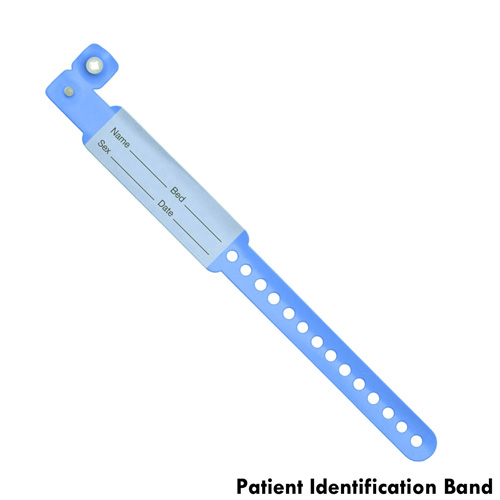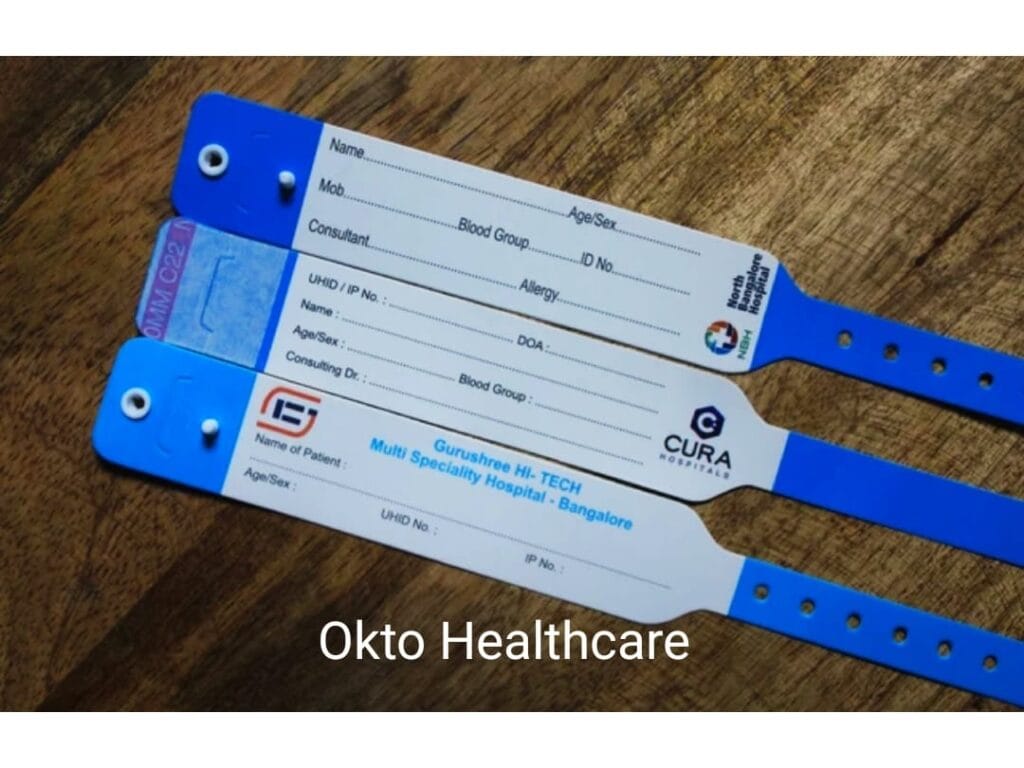Patient Identification Band: An Essential for Streamlined Health Center Workflow
Patient Identification Band: An Essential for Streamlined Health Center Workflow
Blog Article
Streamlining Person Care With Reliable Identification Bands
The execution of efficient identification bands is a critical aspect in boosting client care within healthcare setups. These bands not only offer to mitigate the risks related to individual misidentification but also simplify interaction amongst clinical workers, thereby fostering a more secure atmosphere. Various kinds of identification bands satisfy details needs, from sturdy wristbands for grownups to specialized bands for infants and crucial situations. As the landscape of patient identification advances, one have to think about the ramifications of these systems on general medical care delivery and client outcomes. What technologies wait for in this important area?
Importance of Individual Identification
Making certain precise patient recognition is essential in medical care settings, as it straight influences the safety and security and quality of treatment offered. Misidentification can lead to serious errors, including carrying out the wrong medication, carrying out incorrect procedures, or miscommunicating important person info. Such errors not just endanger patient safety and security however can likewise lead to lawful implications and lowered depend on in health care systems.
Reliable patient identification is basic to developing a safe environment where individuals get suitable and individualized care. It promotes the precise documents of case histories, allergic reactions, and therapy strategies, making certain that doctor have accessibility to essential info in any way times. Furthermore, robust recognition protocols help streamline communication among clinical personnel, enhancing collaboration and minimizing the threat of errors.

Kinds of Identification Bands
Recognition bands play a vital function in maintaining exact individual records and improving safety within medical care atmospheres. Various sorts of recognition bands are used to satisfy the certain needs and needs of various individual populations.

One more type is the ankle joint band, which is especially helpful for infants and newborns, making sure that identification stays intact even during care procedures. Specialty bands, such as those for allergic reaction informs or drop threat indicators, provide added layers of security by drawing instant attention to important individual problems.
Recently, digital recognition bands have gotten popularity, incorporating barcodes or RFID innovation that can be scanned to swiftly fetch client data. These bands enhance process and decrease the risk of human error throughout patient identification processes.
Advantages of Effective Identification
Reliable identification of people through the use of recognition bands contributes considerably to overall client security and care high quality. By guaranteeing that each patient is precisely recognized, doctor can efficiently match clinical therapies and treatments to the right person, lessening the threat of mistakes. This is particularly essential in atmospheres with high patient turnover, where the potential for misidentification is greater.
In addition, reliable identification bands enhance interaction amongst medical care teams. Clear and exact patient identification promotes partnership and ensures that all staff member understand a patient's certain demands and clinical history. This interaction is important for providing worked with care, specifically in emergency situation scenarios where time is vital.

Inevitably, reliable recognition through making use of identification bands not only safeguards clients yet additionally advertises a culture of security within medical care centers (Patient Identification Band). By prioritizing precise recognition, health care organizations can boost results and boost the overall patient experience
Applying Recognition Equipments
While the value of client recognition is well recognized, the application of durable recognition systems presents a complex obstacle for health care companies. Establishing reliable identification systems requires an extensive approach, incorporating modern technology, employees training, and process integration.
First, companies should select appropriate identification modern technologies, such as barcode scanning, RFID, or biometric systems. Patient Identification Band. These innovations ought to be examined based upon cost, use, and compatibility with existing infrastructure. A pilot program can assist determine potential problems before full-blown application
Following, comprehensive training for personnel is crucial. All personnel need to recognize the significance of precise client recognition and be efficient in the usage of the picked innovations. Regular training updates look at here now and assessments can strengthen best techniques and guarantee ongoing compliance.
In addition, healthcare organizations ought to create standardized procedures for patient recognition throughout all divisions, minimizing discrepancies and enhancing communication. Normal audits can aid recognize voids in adherence to these protocols.

Ultimately, an effective application of identification systems not only boosts person security yet likewise cultivates a society of accountability and diligence within medical care setups, guaranteeing dependable and consistent individual care.
Future Trends in Patient Identification
Developments in technology are readied to change patient identification practices in medical care setups. The integration of biometric identification methods, such as fingerprinting and face recognition, is expected to boost precision and safety and security. These technologies can considerably decrease the threat of misidentification, ensuring that clients obtain the correct treatments and medicines.
Moreover, the execution of blockchain modern technology for client records is obtaining traction. This decentralized strategy can give a tamper-proof and safe and secure technique for handling individual identities, consequently streamlining access to critical information across different medical care companies.
One more fad is the enhancing use mobile health and wellness applications that take advantage of QR codes for client identification. These applications permit real-time updates and easy access to patient information, encouraging health care professionals to make enlightened decisions quickly.
In addition, man-made intelligence (AI) is poised to play an essential duty in examining client identification data, identifying patterns, and forecasting possible recognition errors prior to they take place.
As these technologies develop, they assure not only to enhance person security yet also to boost the overall performance of medical care shipment systems. Accepting these advancements will be essential for future-proofing person care methods.
Final Thought
To conclude, efficient recognition bands are crucial for improving person safety and security and care quality within healthcare setups. By minimizing the dangers related to misidentification, these bands facilitate timely and check my blog precise info retrieval, ultimately boosting interaction among doctor. The execution of durable recognition systems not just promotes a culture of safety but also settings health care institutions to adjust to important source future fads in individual identification technology, ensuring optimum results for patients in diverse clinical environments.
As the landscape of client recognition progresses, one must think about the implications of these systems on general medical care delivery and patient outcomes.Reliable individual recognition is basic to developing a protected atmosphere where people receive personalized and ideal care. Eventually, prioritizing efficient patient identification methods not only fosters a society of safety yet additionally adds to improved person outcomes and general satisfaction with medical care solutions.
Reliable identification of individuals through the use of recognition bands contributes dramatically to general patient security and care quality. The application of durable identification systems not only fosters a society of security however likewise placements medical care institutions to adapt to future trends in client recognition technology, making sure ideal outcomes for clients in varied scientific settings.
Report this page